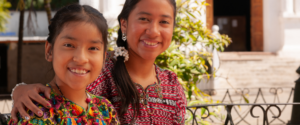In 2021, the United States took an important step in honoring a more complete and accurate history of our country with the recognition of Indigenous Peoples Day. Instead of focusing on Columbus’s “discovery,” this federal holiday (on the 2nd Monday in October) centers the history of Indigenous peoples that have inhabited the Western Hemisphere for tens of thousands of years. In creating this day we acknowledge the genocide, erasure, assimilation, and resilience of the Native people spanning generations.
While the designation of this holiday is an important step in telling the “hard history” of our country, educators play a crucial role in guiding students toward a more complete narrative of Indigenous peoples’ experiences throughout history. The resources below offer background for your own understanding, and inspiration for new ways of teaching Indigenous peoples’ history and their diverse experiences.
1. Learn the history of the Indigenous Taino people of the Caribbean
While many students recognize the name Columbus, rarely are they able to name the Taino people whom he encountered upon his arrival in the Caribbean. The history of their interactions, including their welcoming spirit and subsequent resistance to enslavement, have been all but erased from the history books. This Taíno – Native Heritage and Identity in the Caribbean info graphic and article titled, Whose History Matters? Students Can Name Columbus, But Most Have Never Heard of the Taíno People provide an important historical background and visibility for this missing narrative.
2. Explore the free resources from Native Knowledge 360°
The National Museum of the American Indian (NMAI) has developed a collection of informational and instructional resources called Native Knowledge 360° that serve to enhance and extend the discourse around Native Americans. Search the collection for topics aligned to your curriculum standards, region, nation, or by grade level, where you’ll find videos, teaching posters and guides, as well as digital lessons to download.
3. Travel the globe listening to greetings in 50 Indigenous languages
“Hundreds of languages are a few days away from never being spoken or heard again. By putting Indigenous languages on the global stage, we reclaim our right to talk about our lives in our own words. It means everything to us.”
—Tania Haerekiterā Tapueluelu Wolfgramm
Māori and Tongan Activist and Educator
Introduce your students to the diversity of language among Indigenous peoples with this interactive Google Earth tour. Click on each location to learn about the native inhabitants and listen to an audio clip of each greeting, saying or song. Learn more about the collaborative project and how this work helps to support the revitalization of Indigenous language for future generations.
4. Continue your learning with these helpful resources:
- Created in partnership with Native allies and organizations, the downloadable #HonorNativeLand Guide from the U.S. Department of Arts and Cultures, offers context about the practice of land acknowledgment, gives educators step-by-step instructions, and provides tips for moving beyond acknowledgment into action.
- Tap into authentic children’s literature to support understanding in your elementary classroom with this Social Justice Booklist.
- Take a deeper dive in the history of the United States told from the perspective of Indigenous peoples with An Indigenous Peoples’ History of the United States by historian and activist Roxanne Dunbar-Ortiz or the adaptation for middle grade and young adult readers titled, An Indigenous Peoples’ History of the United States for Young People.
- Stay up to date on recent news headlines with the highly regarded Indigenous news source, Indian Country Today (Twitter: @IndianCountry and Instagram: @indiancountrytoday)







